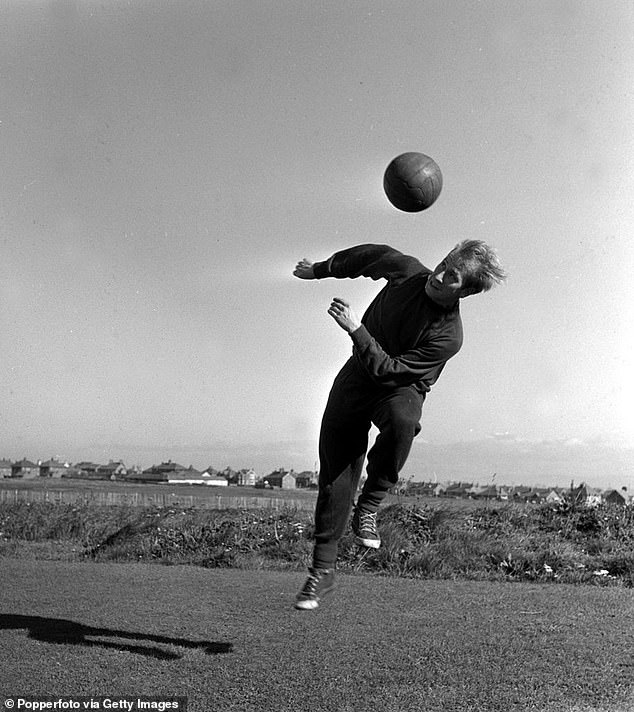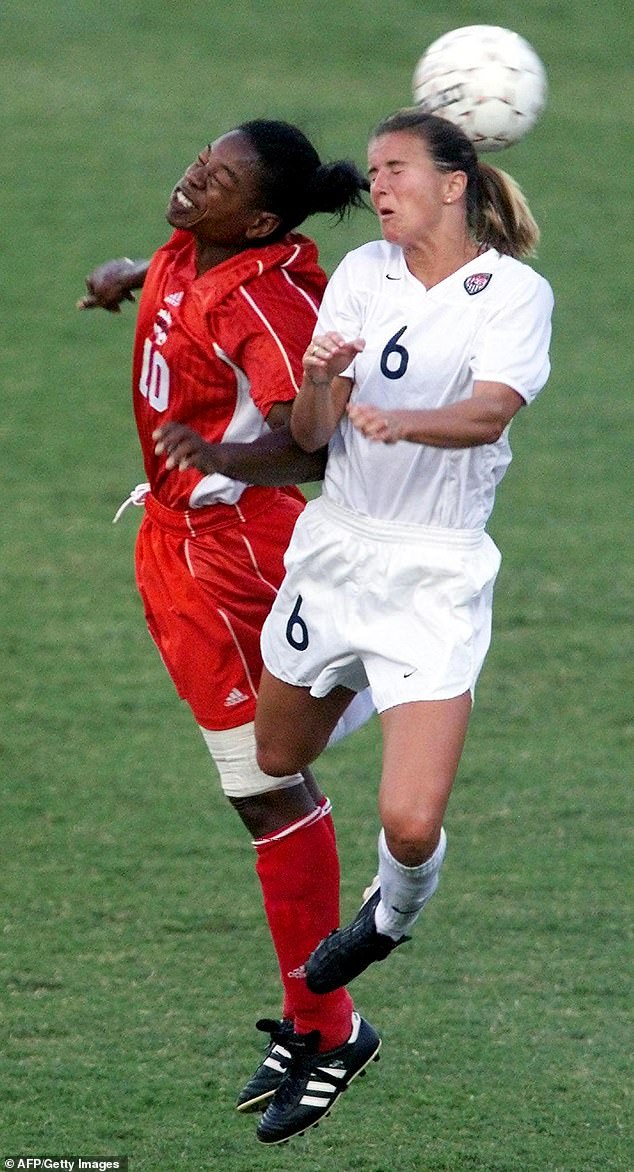Heading the ball in soccer linked to rapid decline in brain function, new study using MRIs shows
Regularly heading a football for just two years can lead to a decline in memory and thinking skills, a new study has found.
Previous studies have suggested that the frequent impact may affect brain function and increase the risk of a specific type of dementia.
However, this study focused on the effect on the brain at one point in time, without following participants over the years.
The new study examined brain changes in 148 amateur football players over two years using brain scans, as well as performance on memory and learning tasks.
Tests were administered twice: once at the beginning of the study and once two years later.
They found that high-level heading was not only linked to brain changes indicative of poorer memory, but it was also linked to a decline in task performance.
A number of footballers have developed dementia and chronic traumatic encephalopathy (CTE), a degenerative brain disease that occurs in people with a history of repetitive brain trauma. In the photo: Bruce Murray heads during a match
Several football players who spent years playing ball have since been diagnosed with chronic traumatic encephalopathy (CTE): a brain disorder linked to repetitive brain trauma that eventually leads to dementia.
Symptoms include memory loss, confusion and impaired judgment.
“There is tremendous concern worldwide about brain injuries in general and the potential that football can cause long-term adverse brain effects,” said senior author Dr. Michael Lipton, professor of radiology at Columbia University.
“Much of this concern relates to the potential of changes in young adulthood to reduce the risk of neurodegeneration and dementia later in life,” he added.

Sir Bobby Charlton, considered one of England’s greatest ever footballers, was diagnosed with dementia in 2020
Former Team USA forward Bruce Murray, 57, is among former athletes believed to suffer from CTE, although the condition cannot be diagnosed until after death.
Murray recently revealed he had been diagnosed with dementia – after forgetting to turn off the ignition of his car, checking himself into hotels for no reason and falling into a canal after losing his balance.
Jeff Astle, a British player for Notts County and West Bromwich Albion, was the first British footballer to suffer from CTE according to an inquest.
Astle died in 2022, aged 59.
When heading the ball, the rapid movement of the skull causes friction between the brain and the bones in the head and stretches the brain tissue.
Heading also stimulates inflammation in the brain, which can affect the small blood vessels that play a crucial role in protecting against dementia and other degenerative brain diseases.
Football is also thought to repeatedly trigger the release of harmful proteins.
Researchers from Columbia University studied 148 young adult amateur soccer players, with an average age of 27 years.
About 39 of the participants were women.
At the beginning and end of the study, researchers asked players to fill out a questionnaire indicating how often they hit the ball with their heads.
The survey consisted of a series of questions about how often someone plays, practices and heads the ball, and in what types of situations.
Two-year price exposure was categorized as low, moderate, or high.
The players were also judged on their ability to remember and recall lists of words.
They also underwent a type of MRI called diffusion tensor imaging (DTI) at the start of the study and again two years later.
DTI records the structure of the brain by tracking the microscopic movement of water molecules through tissue.
Compared to their starting results, the high-head group (who did more than 1,500 headers in two years) showed significant changes in the frontal brain areas involved in memory and learning.
Dr. Lipton said: ‘Our analysis found that high levels of exercise over the two-year period were associated with changes in brain microstructure, similar to findings seen in mild traumatic brain injury.
‘High levels of heading were also associated with a decline in verbal learning performance. This is the first study to demonstrate a long-term change in brain structure associated with head impacts in football.”

American Brandi Chastain (pictured right) and Canada’s Charmaine Hooper (pictured left) headed the ball on July 1, 2000, during their semifinal match in the Women’s Gold Cup Tournament in Louisville, Kentucky
Dr. Lipton and his team conducted a follow-up study on the impact of repeated football games on verbal learning performance.
They analyzed the course for twelve months and conducted DTI and verbal reasoning tests on 353 amateur football players between the ages of 18 and 53.
The brain consists of gray matter and white matter. Gray matter is where the processing of sensation, perception, voluntary movement, learning, speech and cognition takes place.
White matter ensures communication between gray matter areas and between gray matter and the rest of the body.
The boundaries where the gray matter and white matter of the brain meet are known as the ‘gray matter-white matter interface’.
There is a sharp distinction between the two, which indicates a healthy brain.
There is also a significant difference in the density of brain material in this area, making it more vulnerable to injury.
Researchers found that the normally sharp interface between gray matter and white matter was blunted in relation to the high levels of repetitive head impact exposure.
Dr. Lipton: ‘We used DTI to assess the sharpness of the transition from gray matter to white matter.
‘In various brain disorders, what is typically a sharp distinction between these two brain tissues becomes a more gradual or blurred transition.’
Football is now the third most played sport for girls in high schools, with more than 370,000 players worldwide.
